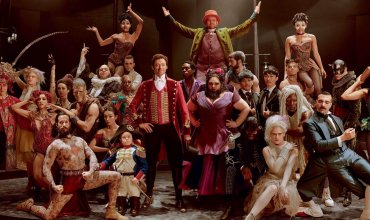You’re a savvy AccessReeler. You’re obviously intercepting this on Google Glass or perhaps streaming the zeitgeist through your smartphone, so you’re already well aware that some UK critics have panned DIANA, the new biopic of Princess Diana, formerly HRH the Princess of Wales. But as yours truly is an AccessReel reviewer who has also seen the movie, (I am your eyes!), I can’t help but feel those critics have done a hatchet job on what is a straightforward biographical film.
DIANA begins in 1995 and tells the story of Princess Diana’s final two years. It deals with her life after the divorce from Prince Charles and focusses on her relationship with Pakistani heart surgeon Hasnat Kahn. The screenplay by Stephen Jeffreys is based on the book Diana: Her Last Love by Kate Snell. Opinions on the accuracy of the source material vary. Kahn has never spoken with Snell. However a number of his and Diana’s friends and work colleagues were interviewed, so depending on who you believe, the book is either a work of fiction or a well-researched piece of investigative journalism. This question is begged by the film version, too. How much of this happened and how much is contrived?
Many of the events portrayed were not public knowledge until the book was released in 2000. Despite being constantly besieged by the paparazzi, Princess Diana managed to conduct her love affair with Hasnat Kahn almost entirely in secret. She spent time with him in his tiny flat. She wore a wig and sunglasses so they could go out in public unrecognized. They created a secretive fantasy world where she was anonymous and they were a normal couple. The fact that Princess Diana might have been seeing Kahn was a matter for media speculation, but the seriousness of their relationship was under wraps.
Fame is one of DIANA’s themes. The line between celebrity and anonymity can be drawn between Diana and Hasnat. She was increasingly adept at playing the fame game and he loathed being discussed in the nation’s daily newspapers. He feared that her celebrity would overshadow the seriousness of his work. He also thought it unlikely that his Muslim family would accept a divorced English woman with children as a suitable bride, even if those kids were the heir and spare to the British throne.
Naomi Watts plays the Princess. Director Oliver Hirschbiegel pursued her for the part and she turned him down twice before accepting. Apparently, playing someone so much in the public eye daunted her. Watts is a serious talent and some of the interest in seeing the movie is in seeing how she tackles the acting challenge. The actress bears little physical resemblance to Diana apart from her colouring; Watts is shorter and more petite. She studied many hours of news footage to find a sense of her subject. She used the Panorama interview with Martin Bashir in order to get the nuances of the voice correct. Obviously wardrobe was a key element of the transformation. Julian Day was responsible for the costume design and the 100 different Diana outfits worn in the film. Day either recreated items from scratch or worked with fashion houses such as Versace. Tod’s provided shoes and bags. Chopard loaned $10,000,000 worth of jewellery to the production. Watts even wears a couple of pieces that belonged to the Princess, like the light blue Azagury Diana wore to the Royal Albert Hall in 1997. Watts nails Diana’s loping walk, but it’s not so much an issue of mimicry, but rather the lack of a clearly defined character that troubles this version of the Princess of Wales.
There are accounts of Diana that tell of her flirty personality. This is largely overlooked. She has been described by both supporters and detractors as manipulative and this quality is utterly absent. This Diana is an essentially light character who has survived a bad marriage and is looking for love. There is an attempt to show her searching for a more serious public role, too. Her campaign against land mines is represented. Perhaps the most obvious lack is any scene showing her as a parent. By all accounts she was a loving and involved mother to her sons, but it seems the decision was made to keep William and Harry as shadowy figures on the margins of the story. The rest of the British Royals are also banished. Charles is mentioned a few times, The Queen never at all. In an attempt to be respectful, the dialogue is limited to a few remarks hurled at “Buck House”.
Naveen Andrews plays Hasnat Kahn. He has the less pressured task of creating a character the audience doesn’t know. His unflashy performance of a private man who is in a situation way over his head, anchors the movie.
The film does a solid job in recreating the media frenzy that accompanied its subject. We are reminded that our celebrity-obsessed culture metastasised during her time. She was a media superstar of the ’80s and ‘90s, along with people like Madonna or Michael Jackson, icons whose every utterance, fashion choice and relationship decision was deemed newsworthy. Princess Diana was in her own special category because she brought this modern version of celebrity to the British Royals who loathed it as thoroughly as Hasnat Kahn did.
DIANA doesn’t go deep. It is a respectful portrait that leaves out the problematical parts of Princess Diana’s personality. It is a film for those who still carry a torch for the “People’s Princess”. Younger viewers may gain some historical insight into an era when the idea of choosing to be private was something that some people valued and newspapers were an important source of information for millions.
DIANA runs for 113 minutes. I rated it 5/10.


